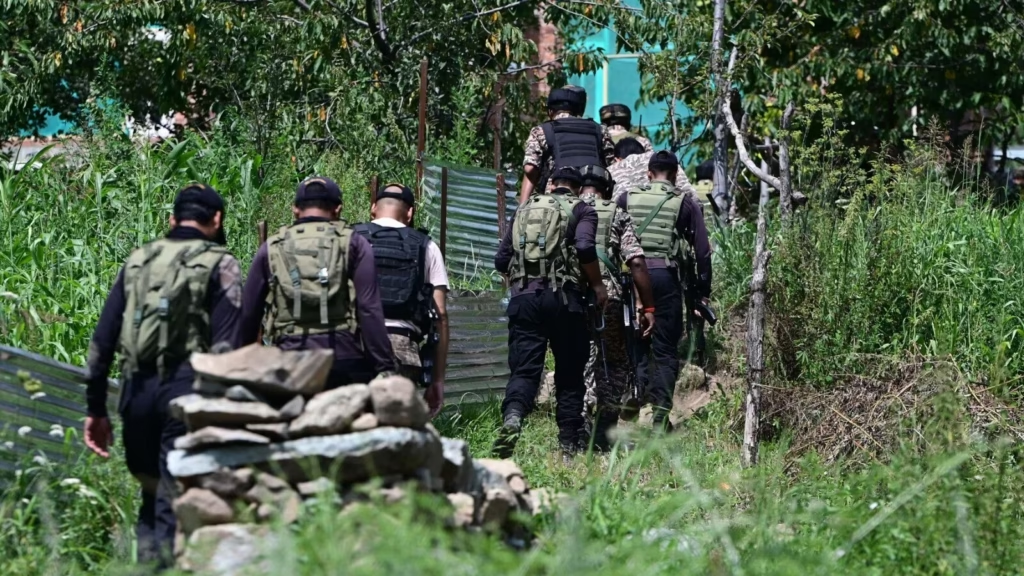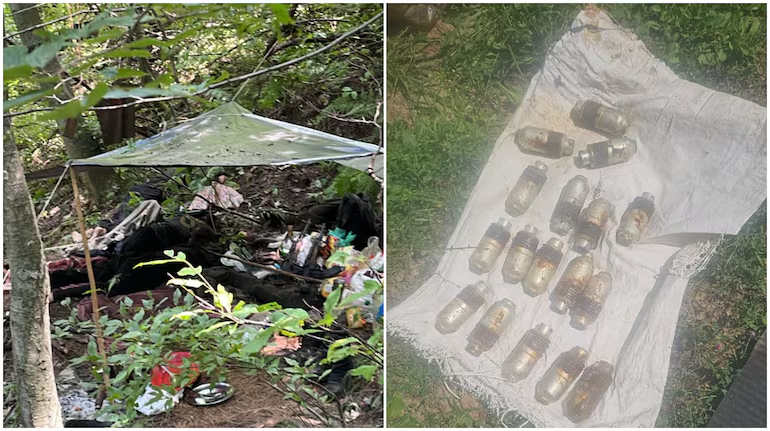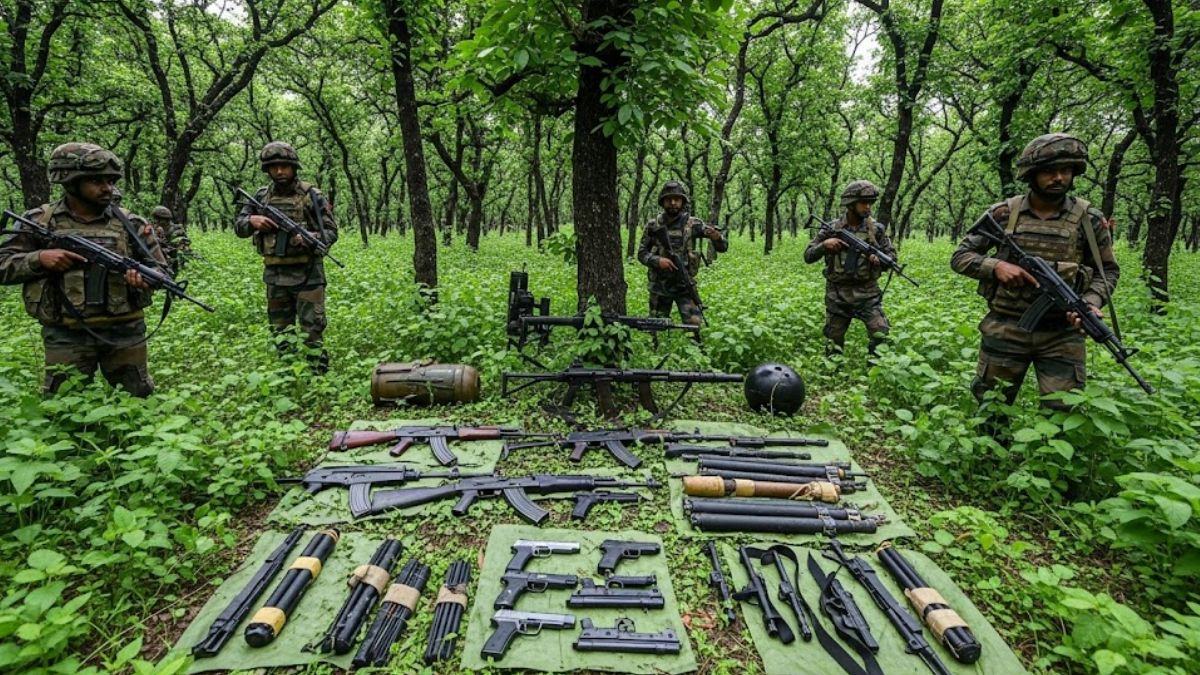In a powerful show of precision, coordination, and resolve, Indian security forces executed Operation Mahadev on July 28, 2025—an intense counter-terror mission in the Dachigam forests near Srinagar. This operation was a direct response to the horrific Pahalgam terror attack that shook the nation in April 2025, where 26 innocent tourists were brutally gunned down.
Operation Mahadev not only eliminated high-value terror targets but also delivered a decisive blow to Pakistan-backed terrorist infrastructure in Kashmir.
The Catalyst: The Pahalgam Massacre
On April 22, 2025, armed terrorists ambushed a group of domestic tourists in the picturesque valley of Pahalgam. In what became one of the deadliest civilian attacks in recent years, 26 people—including children—were killed in cold blood. Survivors recounted harrowing tales of families being separated, questioned about their faith, and shot at point-blank range.
The barbarity of the attack demanded a strategic, coordinated, and firm response. That response came in the form of Operation Sindoor, followed by Operation Mahadev—a targeted mission to hunt down those directly responsible for the massacre.
Intelligence Gathering and Tracking
The turning point came when intelligence agencies intercepted encrypted satellite communications coming from the Zabarwan Range, an area adjacent to the Dachigam National Park. Suspecting terrorist hideouts in this forested terrain, a 14-day surveillance operation ensued. Local nomadic communities and informants contributed crucial information that helped security forces narrow down the suspects’ location.
The dense forest, steep ridges, and low visibility—often less than 2 meters—posed significant operational challenges. Despite this, elite units of the Indian Army (Chinar Corps), Rashtriya Rifles, 4 PARA (Special Forces), Central Reserve Police Force (CRPF), and Jammu & Kashmir Police coordinated seamlessly to plan their strike.

The Operation Unfolds
In the early hours of July 28, 2025, Indian troops stealthily entered the Harwan-Lidwas area under thick forest cover. Around 11:30 AM, contact was established with the suspects hiding in a concealed bunker.
A fierce gunfight followed.
Within an hour, all three terrorists were neutralized. Drones and thermal imaging confirmed their deaths, and the area was secured without any civilian or security force casualties.
What Was Recovered
After the encounter, troops recovered a significant cache of arms and equipment:
- A US-made M4 carbine
- Two AK-series assault rifles
- Multiple rifle grenades, magazines, and night-vision gear
- Satellite phones and encrypted communication devices
This level of equipment indicated a high degree of training and coordination—pointing to backing from state-sponsored groups across the border.

Who Were the Terrorists?
Though DNA verification is still underway, multiple intelligence and security sources have identified the slain terrorists as:
- Hashim Musa (alias Suleman or Asif): A former Pakistani Army para-commando and top Lashkar-e-Taiba commander. Believed to be the mastermind behind the Pahalgam attack. He had a ₹20 lakh bounty on his head.
- Abu Hamza: A seasoned militant linked to multiple cross-border infiltration attempts.
- Yasir (aka Jibran/Ali): A trained explosives expert involved in radicalizing youth and managing logistics for sleeper cells.
The neutralization of these individuals is seen as a major intelligence and operational success.
Operation Significance
Operation Mahadev achieved multiple objectives:
- Eliminated key perpetrators of the Pahalgam massacre
- Disrupted a deep-forest terror network that had gone undetected for weeks
- Demonstrated the coordination between local informants, intelligence agencies, and special operations forces
- Sent a strong geopolitical message that India will pursue justice—no matter where the threats hide
The timing was also symbolic: the encounter occurred as Parliament was actively debating India’s counter-terror strategy, underlining national unity and institutional resolve.
Political and Public Reaction
Top military commanders hailed the operation as a textbook example of intelligence-led action. Jammu & Kashmir’s political leaders praised the forces for their swift and clean execution, emphasizing that peace in the region would only come through strength and vigilance.
Many viewed Operation Mahadev not just as a tactical victory but also a moral one—restoring public confidence and delivering long-awaited justice to the families of the Pahalgam victims.
What Comes Next?
While Operation Mahadev was a resounding success, security forces are aware that the battle is far from over. The following steps are now in motion:
- DNA confirmation of the deceased terrorists
- Interrogation of suspects arrested during related raids
- Analysis of recovered equipment to uncover sleeper cells
- Tracking digital trails for cross-border links and support networks
The National Investigation Agency (NIA) has already taken over the case to lead deeper forensic and legal investigations.
Final Reflections
Operation Mahadev is a defining chapter in India’s modern counter-terror strategy. It was swift, silent, and successful—precisely what a nation demands when its innocent civilians are targeted in acts of terror.
Beyond the operation itself, Mahadev symbolizes a renewed doctrine: India will not wait, it will act. With surgical precision and unwavering will, the country has shown that justice may take time—but it will arrive, fully armed and unrelenting.
More For You
1.Avatar: Fire & Ash – James Cameron Returns with a Fiery Stunner
2.Android vs iPhone for Photography: Which Smartphone Takes Better Photos in 2025?
3.How to Speed Up an Old Laptop: A Detailed Guide to Boost Performance
4.Best Budget Laptop for Students in India (2025): Top Picks for Study, Productivity & Entertainment

